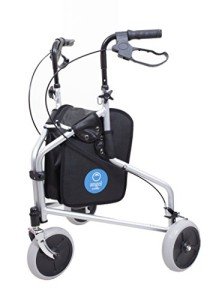This company has no active jobs
What's The Current Job Market For Handicap Walker Professionals?

Understanding Handicap Walkers: Types, Benefits, and Usage
Handicap walkers, also commonly referred to as mobility walkers or merely walkers, serve as essential aids for people with mobility challenges. These devices provide physical support and stability, enabling users to walk more with confidence and separately. This post looks into the various kinds of handicap walkers, their benefits, and essential considerations when selecting one.

What is a Handicap Walker?
A Handicap Walker (gitea.Kongxq.fun) is a device designed to assist people who have difficulty walking due to age, illness, or impairment. Walkers help users preserve their balance, prevent falls, and recover mobility. Unlike canes, which offer very little assistance, handicap walkers typically use a wider base of stability, making them ideal for more substantial mobility difficulties.
Kinds Of Handicap Walkers
Handicap walkers been available in various styles, designed to meet the unique requirements of users. Below is a breakdown of the most common types:
Type of WalkerDescriptionPerfect UserRequirement WalkerA lightweight frame that needs raising to move. Typically has rubber suggestions for traction.Those who can lift the walker and have moderate balance issues.Wheeled WalkerFunctions two wheels at the front, enabling much easier mobility without lifting.Users who can preserve stability and need more support while walking.Rollator WalkerSimilar to wheeled walkers but consists of hand brakes and a seat for resting.Individuals needing a portable resting option with improved mobility.Bariatric WalkerSpecifically designed for heavier individuals, offering reinforced frames and bigger hand grips.Heavier users needing extra support and stability.Child WalkerCustom-made models for kids to aid in their advancement and mobility.Children with developmental hold-ups or mobility difficulties.Benefits of Using a Handicap Walker
Lots of users find that handicap walkers considerably enhance their lifestyle. Here are some benefits:
1. Increased Stability
Handicap walkers provide a sturdy support structure, which helps avoid falls and boosts users' confidence when moving.
2. Improved Mobility
Walkers make it simpler for individuals with mobility constraints to navigate stairs, irregular surface areas, and other tough environments.
3. Independence
Utilizing a walker enables individuals to perform day-to-day activities independently, whether it's walking around your house or going shopping.
4. Discomfort Relief
Walkers enhance posture and distribute weight more uniformly, possibly reducing pain in joints and muscles throughout movement.
5. Social Engagement
By helping with mobility, walkers enable users to participate more actively in social occasions, family gatherings, and community activities, fostering a sense of belonging.
Essential Considerations When Choosing a Walker
Picking the best handicap walker is essential for guaranteeing safety and comfort. Below are key factors to think about:
User's Height: Walkers come in different heights. It's vital to select one that allows the user to stand upright with a small bend in the elbows when keeping the manages.
Weight Capacity: Assess the weight capability of the walker, especially for bariatric options, to guarantee it matches the user's needs.
Mobility: If the walker will be utilized regularly in different places, consider models that can be quickly folded or transported, such as rollators.
Functions: Some walkers consist of additional functions like padded seats, storage baskets, and adjustable manages. Examine which functions are most useful for the user.
User Preferences: The individual's comfort and choices ought to likewise play a significant function in the selection. Evaluating numerous models might help determine the best fit.
How to Use a Handicap Walker Effectively
Utilizing a handicap walker correctly makes sure safety and maximizes its benefits. Follow these steps for safe usage:
- Adjust the Height: Make sure the walker is changed to the proper height for the user.
- Support the Walker: Place the walker in front while making sure all four rubber ideas or wheels touch with the ground.
- Use Proper Techniques: Move the walker forward about one step length, and after that enter the walker while keeping the weight balanced.
- Preserve Good Posture: Stand straight and utilize the walker for assistance, not leaning exceedingly on it.
- Practice Regularly: Encourage users to practice walking with the walker frequently, helping to construct self-confidence and improve balance.
Regularly Asked Questions (FAQs)
1. What is the difference between a standard walker and a rollator?
Standard walkers need the user to raise them with each step, while rollators have wheels and allow the user to push them forward without lifting. Rollators likewise typically include brakes and might have a seat.
2. Are handicap walkers covered by insurance coverage?
Protection for handicap walkers can differ based upon a person's insurance coverage plan. It is advisable to consult the company for specific information relating to coverage and any needed paperwork needed.
3. Can kids use handicap walkers?
Yes, there are walkers designed particularly for kids that deal with their developmental requirements. It's necessary to select a design that is age-appropriate and provides the required support.
4. How do I keep my walker?
Frequently inspect the walker for wear and tear, including the grips and wheels. Tidy the walker as needed and guarantee all parts are functioning properly for safety.
5. When is it time to stop using a walker?
This varies by person. Users should seek advice from their doctor to assess mobility enhancements and discuss whether transitioning to a various mobility aid or moving without help is suitable.
A handicap walker can be a transformative tool for people with mobility difficulties, using them higher stability, self-reliance, and boosted quality of life. By comprehending the different types, benefits, and crucial factors to consider in picking a walker, individuals can make informed choices that align with their distinct requirements and lifestyle. Whether for rehab, aging gracefully, or handling specials needs, handicap walkers play a crucial role in promoting mobility and wellness.

